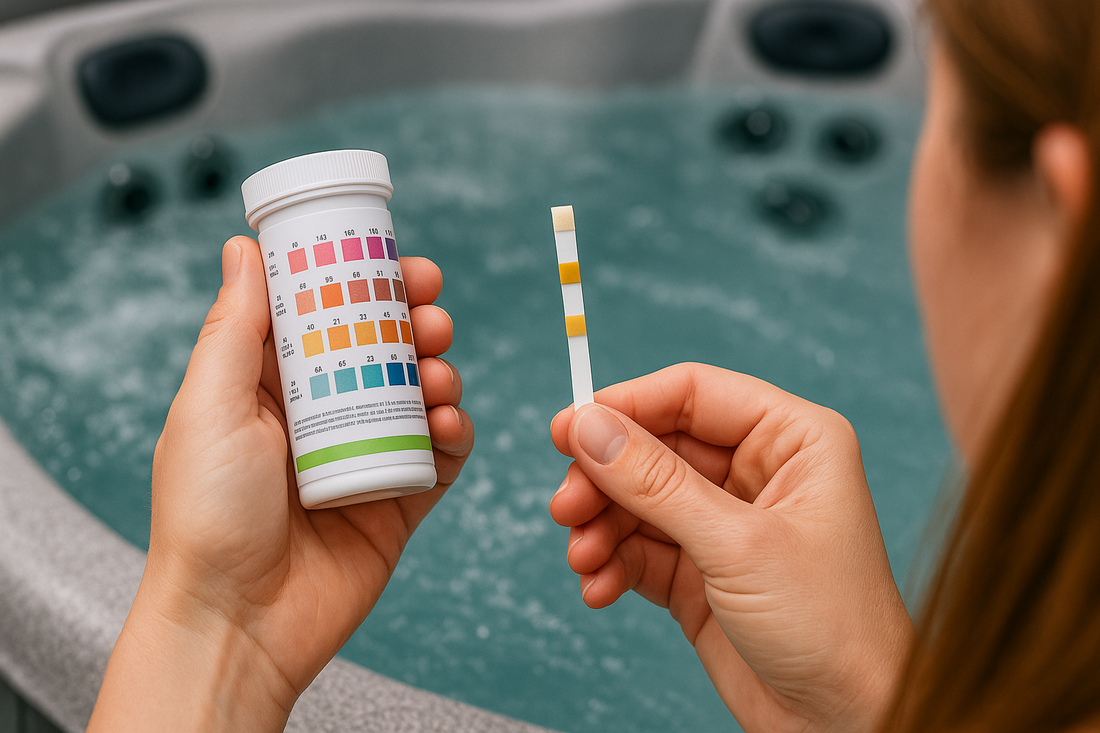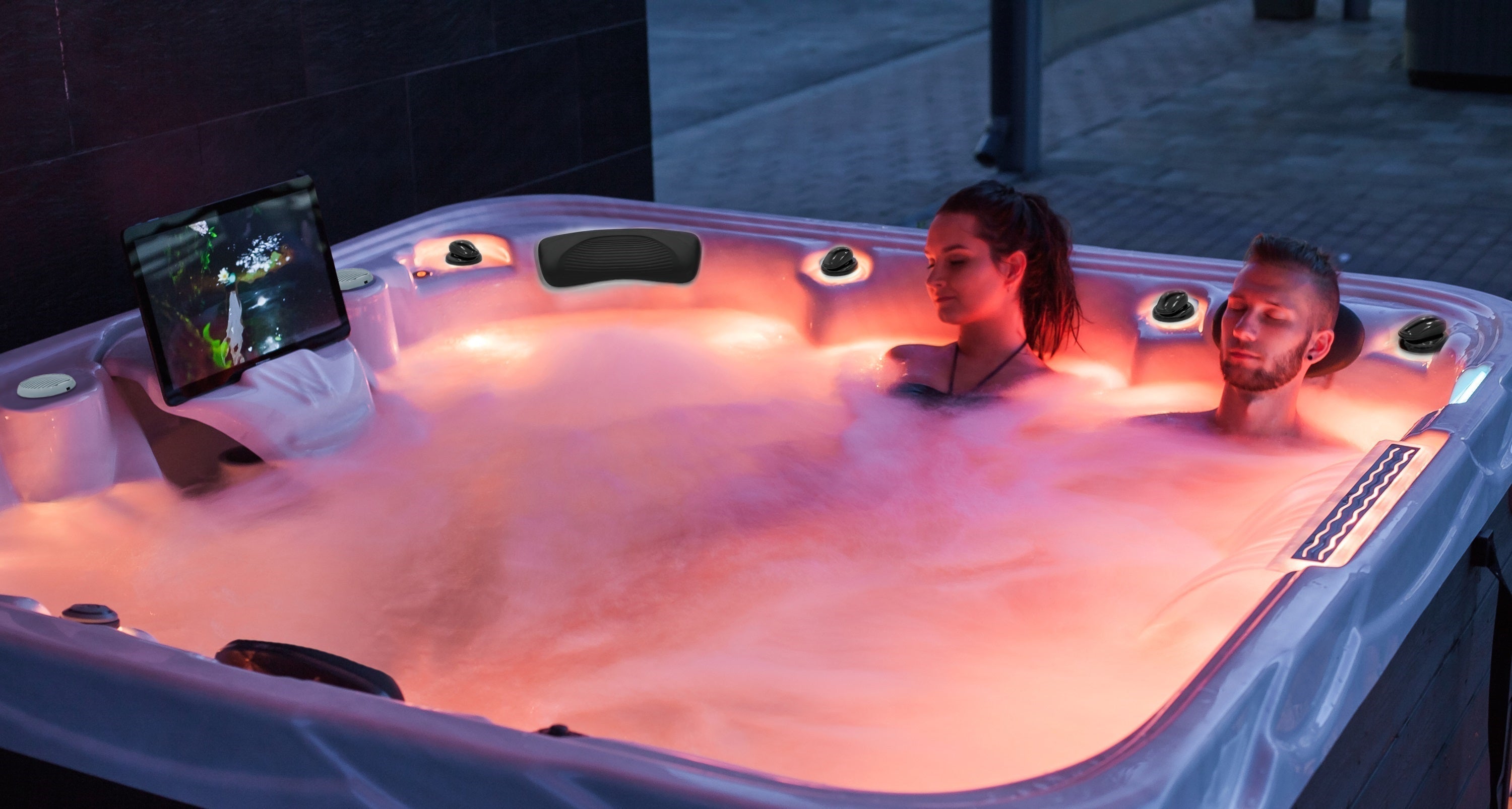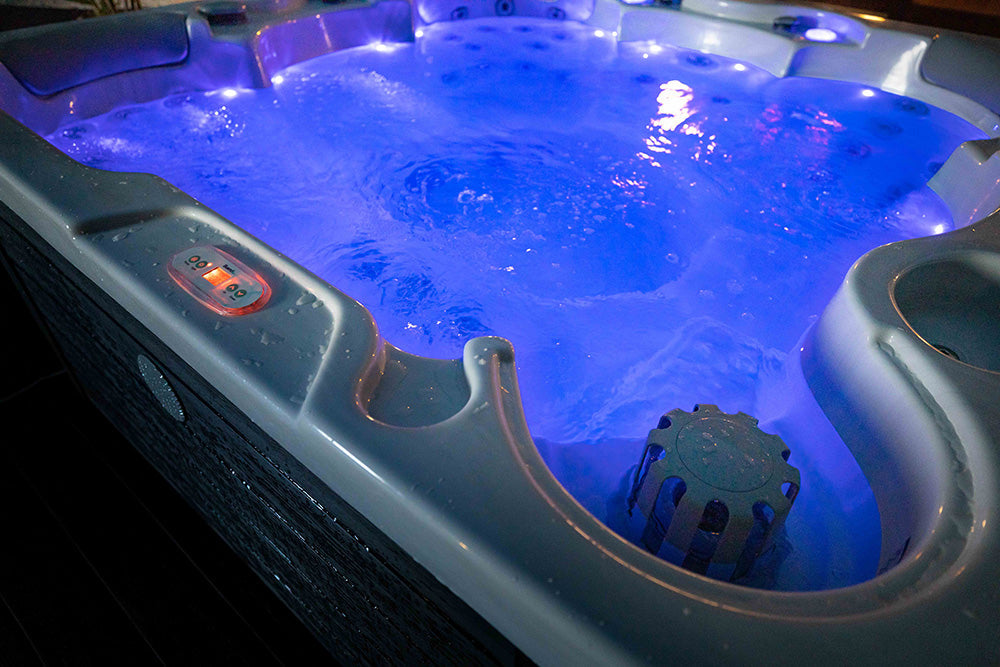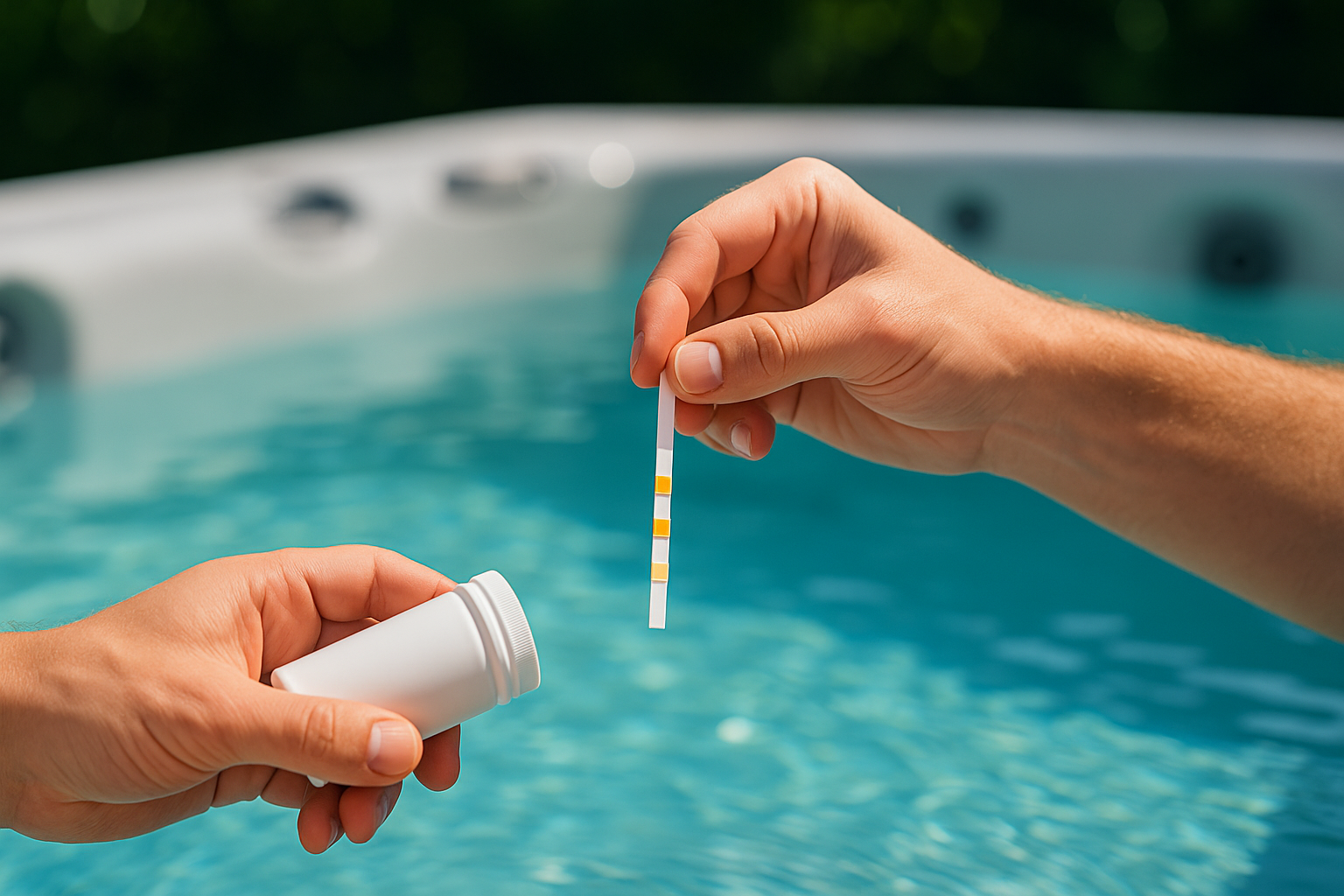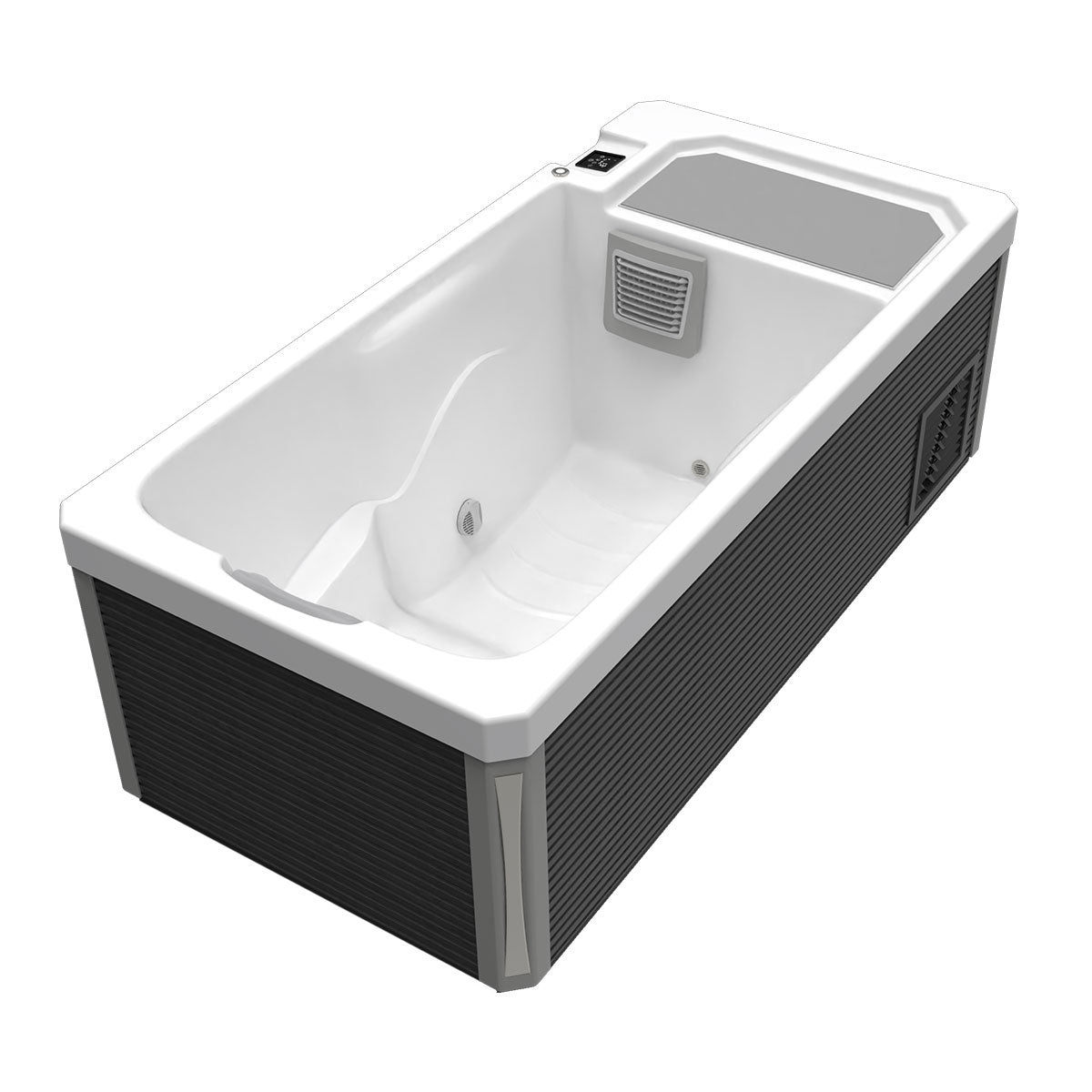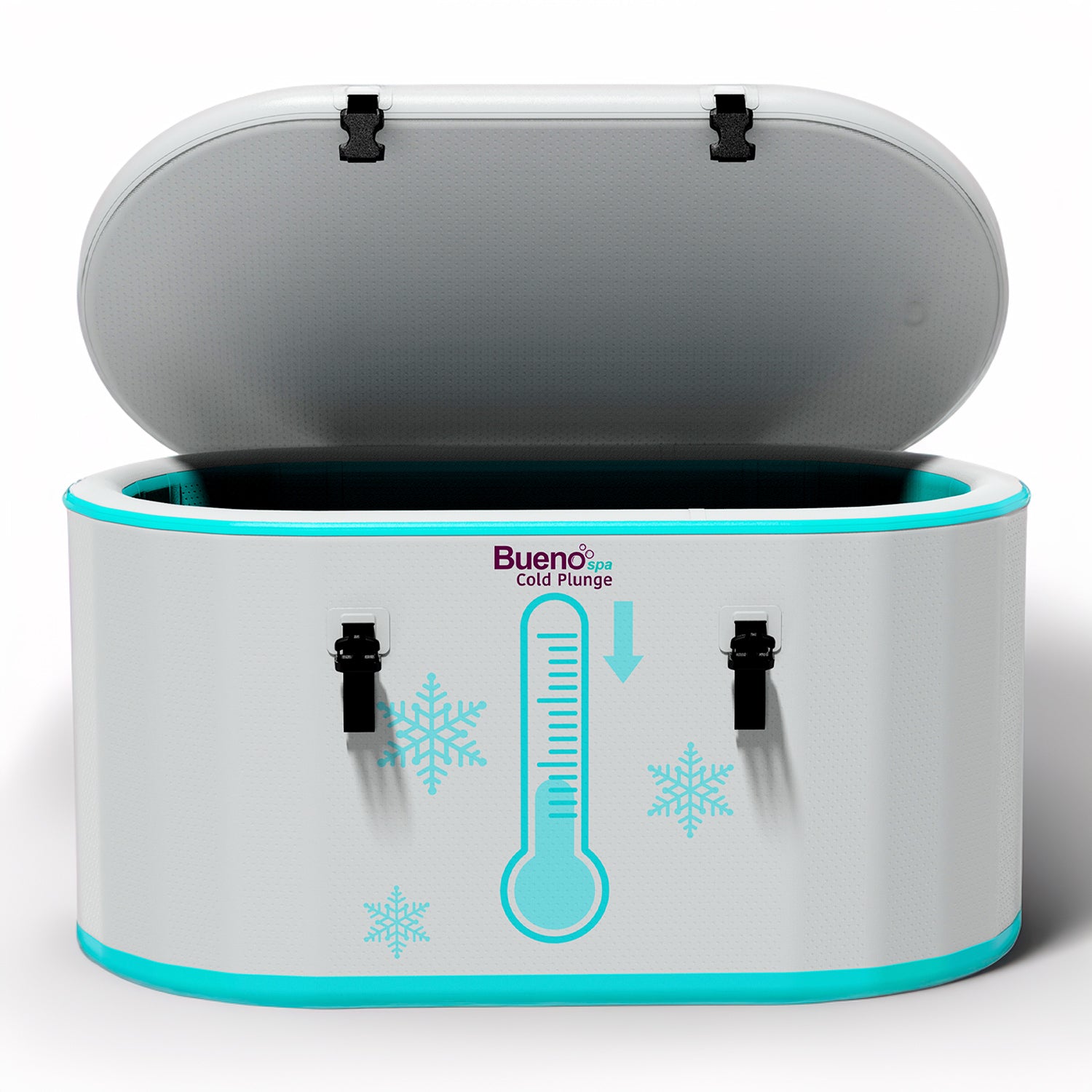As wonderful as your hot tub is for relaxation and that little extra touch of comfort, you do have the responsibility of maintaining its condition. Don’t disregard that duty. Low pH in hot tub water can damage your skin along with the hot tub itself. So, you need to make sure you get the pH levels right, which means raising them when they drop below the required levels. That’s where we come in – this ultimate guide to how to increase pH in hot tub water teaches you everything you need to know.
Signs of Low pH in a Hot Tub
Before we dig into raising pH levels, let’s indulge in a little hot tub water chemistry lesson to show you why balancing your pH levels is so important.
What Is the Ideal pH Level for a Hot Tub?
Scientists use the pH scale to measure how acidic or “basic” – another word for alkaline – water is. The scale goes from 1 to 14, with a pH below 7 being acidic, and anything above classified as alkaline. You want your hot tub water to be slightly alkaline (or “basic”). The key word here is “slightly.” An ideal pH level for your hot tub water is between 7.2 and 7.8.
Failure to keep your hot tub’s water within this range potentially makes your tub sessions unsafe. Furthermore, acidic water can wreak havoc on your hot tub’s internal mechanisms. They begin to corrode, forcing repeated maintenance, parts replacement, and overall higher costs to keep your hot tub running.
Common Indicators of Low pH
You’ll realize that you haven’t gotten balancing hot tub pH right if you notice any of these common indicators of a low pH:
- You experience skin or eye irritation during or after you spend time in your hot tub
- Metal parts of your hot tub – such as the jets and heater – experience corrosion
- You notice strange and foul odors emanating from water that appears cloudier than usual
- There’s an increased possibility of damage to your hot tub’s surfaces
Why Does Low pH Occur?
There are several reasons why low pH occurs, starting with an overuse of essential hot tub chemicals. Chlorine and sanitizers are both vital chemicals we would recommend in any hot tub care guide. However, you need to stick to the recommendations on the chemical packages – going overboard for a “better” clean often leads to more acids entering your hot tub’s water.
Other factors affecting pH include your own body, with sweat, body oils, and lotions all contributing to altering your hot tub’s pH levels. If you keep your hot tub outside, a pH increase for hot tubs can also occur due to the chemicals entering the tub following heavy rainfall.
How to Measure pH Levels in a Hot Tub
We can safely say that regulating pH levels is one of the best hot tub maintenance tips. The question now is how do you measure pH levels to see where they are?
Best Methods to Test Hot Tub pH
No adjusting pH in hot tub water can occur before you know the water’s current pH level. These three testing methods are the best choices.
Test Strips
Quick, cheap, and easy are the key features of a pH test strip, though you sacrifice some accuracy for that convenience.
Dip the strip in your hot tub water and wait for it to change color. Compare the strip color to the color chart provided with the tool and you get a rough estimate of your water’s pH level. We recommend this method if you’re a casual hot tub owner who just wants to carry out quick checks.
Liquid Test Kits
Liquid test kits offer more accuracy than test strips, which is why professionals use them. You collect a sample of your hot tub’s water in a test vial and add a testing solution – called a “reagent” – to the sample. The sample changes color, you compare it to a chart, and you get a method that leads to more precise chemical balancing.
Digital Testers
A digital tester gives you an exact reading of your water’s pH levels, allowing for more consistent monitoring. Modern digital testers are ideal for colorblind people who struggle with color-matching and people who want the most accurate result possible. The downside is they require regular calibration along with battery changes. Plus, they’re more expensive than the other two options.
How Often Should You Test pH?
There are several times you should test pH to ensure you maintain balanced hot tub water chemistry:
- Test at least twice per week if you’re a regular user who enjoys your hot tub three or more times per week.
- Always test before and after heavy usage, such as when you have an extended soaking session or hold a hot tub party.
- Outdoor hot tubs should be tested following rainstorms due to rain potentially changing your water’s pH level.
- Always test after refilling your hot tub to ensure there are no chemical imbalances.
- Test immediately if your hot tub water is cloudy, foamy, or emanates a strange odor.
How to Increase pH in Hot Tub
Now that you understand pH levels, we move on to the important part – how to raise pH in hot tub water.
Use a pH Increaser
A pH increaser is a commercial-grade product that uses sodium carbonate or “soda ash” to regulate your hot tub’s pH levels. They’re straightforward to use if you follow these steps:
Step 1: Turn on your hot tub’s jets to encourage water circulation.
Step 2: Add the amount of pH increaser recommended on the packaging. Avoid overdosing – going too high sends your pH level below where it needs to be. If you’re unsure, underdose first and then use the pH increaser again until you hit the right levels.
Step 3: Allow your hot tub water to circulate for 30 minutes before retesting with one of the methods we mentioned earlier.
Aerate the Water to Raise pH Naturally
Hot tubs can self-regulate pH levels, in a sense. Aerating the water involves running the hot tub’s jets and air blowers to gradually increase the water’s pH levels and reduce carbon dioxide. That’s due to the bubbles introduced into the water by the blowers, which change the water’s chemical balance. Cycle through aerating and testing repeatedly to reach the correct pH range.
Preventing Low pH in Hot Tubs
We’ll leave you with a quick hot tub care guide to prevent your hot tub water from having a low pH:
- Conduct Regular Maintenance: Don’t skimp on cleaning your hot tub’s filters and draining your water periodically. Poor maintenance leads to unwanted muck getting in your water, which affects pH levels.
- Shower Before Use: Your body’s natural (and unnatural) chemicals affect hot tub water pH. Shower to clean away sweat, lotions, and other contaminants before using your hot tub.
- Proper Chemical Balancing: Always add chlorine and bromine based on the manufacturer’s instructions – overuse causes issues with your water’s chemical composition. Aim to maintain alkalinity at between 80 and 120 parts per million to stabilize your water’s pH.
Master Your Hot Tub’s pH Levels With BuenoSpa
You don’t want to irritate your skin or eyes when using your hot tub, and you certainly could do without spending more than you need on maintenance. Avoiding those issues is why it’s so crucial to master your hot tub’s pH levels and understand how to increase pH in hot tub water when needed.
BEUNOSPA can help you!


 (888) TO - BUENO
(888) TO - BUENO
